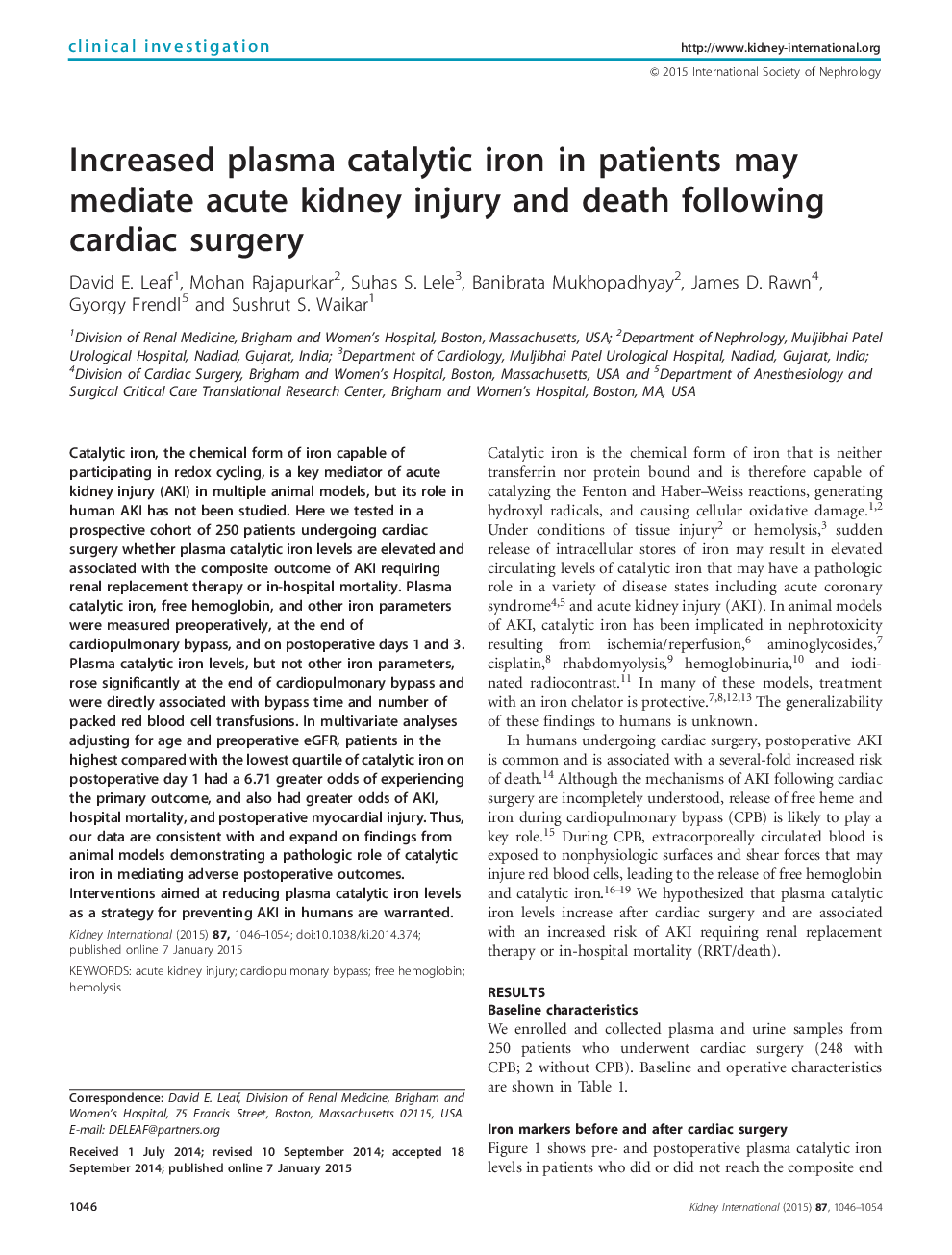| Article ID | Journal | Published Year | Pages | File Type |
|---|---|---|---|---|
| 6161802 | Kidney International | 2015 | 9 Pages |
Abstract
Catalytic iron, the chemical form of iron capable of participating in redox cycling, is a key mediator of acute kidney injury (AKI) in multiple animal models, but its role in human AKI has not been studied. Here we tested in a prospective cohort of 250 patients undergoing cardiac surgery whether plasma catalytic iron levels are elevated and associated with the composite outcome of AKI requiring renal replacement therapy or in-hospital mortality. Plasma catalytic iron, free hemoglobin, and other iron parameters were measured preoperatively, at the end of cardiopulmonary bypass, and on postoperative days 1 and 3. Plasma catalytic iron levels, but not other iron parameters, rose significantly at the end of cardiopulmonary bypass and were directly associated with bypass time and number of packed red blood cell transfusions. In multivariate analyses adjusting for age and preoperative eGFR, patients in the highest compared with the lowest quartile of catalytic iron on postoperative day 1 had a 6.71 greater odds of experiencing the primary outcome, and also had greater odds of AKI, hospital mortality, and postoperative myocardial injury. Thus, our data are consistent with and expand on findings from animal models demonstrating a pathologic role of catalytic iron in mediating adverse postoperative outcomes. Interventions aimed at reducing plasma catalytic iron levels as a strategy for preventing AKI in humans are warranted.
Related Topics
Health Sciences
Medicine and Dentistry
Nephrology
Authors
David E. Leaf, Mohan Rajapurkar, Suhas S. Lele, Banibrata Mukhopadhyay, James D. Rawn, Gyorgy Frendl, Sushrut S. Waikar,
